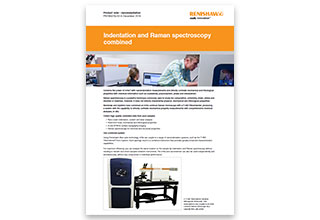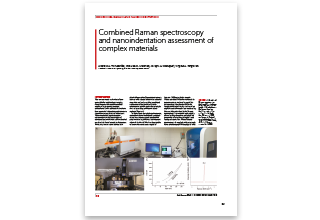Bu sayfa şu anda sizin dilinizde mevcut değildir. Google'ın Çeviri sistemini kullanarak
otomatikleştirilmiş çeviriye
ulaşabilirsiniz. Bu hizmeti sağlamaktan sorumlu değiliz ve çeviri sonuçları tarafımızdan kontrol edilmemiştir.
Eğer daha fazla yardıma ihtiyaç duyarsanız lütfen
bizim ile temasa geçiniz.
Nanoindentation
Directly correlate mechanical properties measurements from indentation with comprehensive chemical analyses from Raman, in situ.
Raman/nanoindentation
Combine the power of inVia with nanoindentation measurements and directly correlate mechanical and tribological properties with chemical information, such as crystallinity, polymorphism, phase and stress/strain.
One combined system
Using our fibre optic technology, inVia can couple to a range of nanoindentation systems, such as the TI 950 TriboIndenter® from Hysitron. Such pairings result in a combined instrument that provides greatly enhanced characterisation capabilities.
For maximum efficiency you can analyse the same location on the sample by indentation and Raman spectroscopy without needing to transfer and orient samples between instruments. The inVia and nanoindenter can also be used independently and simultaneously, without any compromise in individual performance.
Collect high quality correlated data from your sample
- Nano-scale indentation, scratch and wear analysis
- Determine local, mechanical and tribological properties
- in situ SPM for surface topography imaging
- Raman spectroscopy for chemical and structural properties
Gain greater insights into mechanical properties and deformation behaviour at the nanoscale and microscale.
Latest nanoindentation news
The University of Colorado Boulder, USA, combines Raman spectroscopy and nanoindentation
The Biomechanics and Biomimetics Research Laboratory at the University of Colorado Boulder uses a Renishaw inVia™ confocal Raman microscope to characterise biological tissues and biomaterials. The system has been interfaced with a nanoindenter system from Hysitron Inc, Minneapolis, USA, to provide combined chemical and mechanical information on samples.

